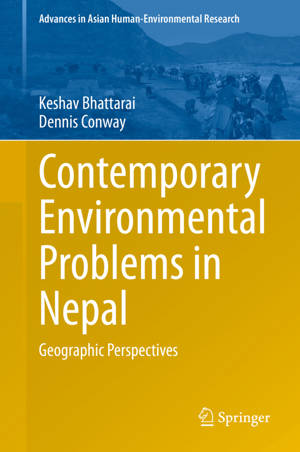
- Afhalen na 1 uur in een winkel met voorraad
- Gratis thuislevering in België vanaf € 30
- Ruim aanbod met 7 miljoen producten
- Afhalen na 1 uur in een winkel met voorraad
- Gratis thuislevering in België vanaf € 30
- Ruim aanbod met 7 miljoen producten
Contemporary Environmental Problems in Nepal
Geographic Perspectives
Keshav Bhattarai, Dennis ConwayOmschrijving
This book will utilize many empirical examples of environmental cases spanning the diverse landscapes of Nepal to demonstrate how useful information GIS tools can be in effective decision making and record keeping in such a problematic South Asian 'developing country'
Through various examples, this book will demonstrate how possible it is to save planning time for development engineers who often spend 40% to 60% of their time while validating information. GIS can reduce such project delivery time by 20% to 50%
This book presents cases how GIS can help in the improvement of data management through a better understanding of spatial phenomena. It will present illustrated examples how GIS application incorporates mathematical methods to utilize locational information to connect various disciplines, such as biology, epidemiology, ethnology, geography, sociology and statistics
Through the uses of GIS, remote sensing, GPS, and statistical procedures, this book brings together different applications of spatial analysis methods for understanding geographic variation of certain entities while considering various spatial effects
This book also does certain spatial analysis, modelling and simulation techniques for solving location problems and informing spatial allocation and deployment of resources
It also presents case studies of participatory forest management using a spatial-temporal model. Furthermore, this book analyzes the paths of forest degradation and regeneration and villagers' utility before and after an access restriction. These approaches will help to improve both forest quality and villagers' livelihoods. Our examples presented in this book will be useful worldwide both in academics and real world problem solving
Specificaties
Betrokkenen
- Auteur(s):
- Uitgeverij:
Inhoud
- Aantal bladzijden:
- 764
- Taal:
- Engels
- Reeks:
Eigenschappen
- Productcode (EAN):
- 9783030501662
- Verschijningsdatum:
- 24/11/2020
- Uitvoering:
- Hardcover
- Formaat:
- Genaaid
- Afmetingen:
- 156 mm x 234 mm
- Gewicht:
- 1283 g

Alleen bij Standaard Boekhandel
Beoordelingen
We publiceren alleen reviews die voldoen aan de voorwaarden voor reviews. Bekijk onze voorwaarden voor reviews.









